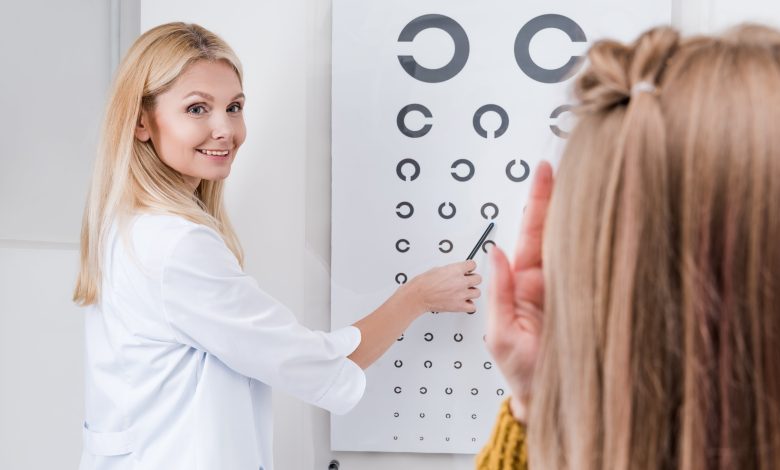Low Vision Aids To Improve Your Sight

According to the National Eye Institute, about 1.3 million American adults and 200,000 children suffer from low vision. Low sight can also be caused by cataracts, glaucoma, macular degeneration, or diabetic retinopathy. Fortunately, there are many kinds of low vision aids that can help improve your sight and make you live a normal life.
What is low vision?
The term “low vision” describes any visual impairment where the best possible correction cannot enable the person to read the small print at close distances, which means less than 20 inches. There are three different levels of visual impairment:
Severely visual impairment
The person has very poor acuity, and/or depth perception. He or she will have difficulty reading, recognizing faces, identifying colors, walking a straight line, or doing other tasks that require using both eyes and a lot of peripheral vision.
Moderate vision loss
The person has good acuity but may experience issues in distance vision because his or her central vision is impaired. This could affect their ability to identify objects, perceive color, drive, walk, do household chores and perform everyday activities.
Mild vision loss
The person has moderate acuity without major restrictions in daily living activity.
What causes low vision?
There are a number of conditions that can lead to visual impairment including advanced age, diabetes, glaucoma, and macular degeneration. In addition, some diseases like optic nerve damage and retinal detachment can cause permanent vision loss.
Other factors such as uncorrected refractive errors, myopia and hyperopia, corneal dystrophies, dry eyes, cataract surgery, injuries, and inflammatory eye disorders may cause temporary or chronic blurriness, double vision, decreased contrast sensitivity, light dazzle, glare, lack of depth perception, loss of distance vision, loss of night vision, monocular vision, reduced peripheral vision, scotomata, tunnel vision, and blind spots.
How does low vision impact quality of life?
People who use low vision devices must learn new skills to compensate for the loss of their central visual field, especially when they try to use computer screens and television sets. They need to learn how to read small text, navigate through busy streets, shop for groceries, cook, wash dishes, clean their house and take care of personal appearance.
For these individuals, finding appropriate visual impairment products becomes more difficult every year. The advent of electronic devices makes it important that our society provide support systems so that those with visual impairment can easily access information and communicate with others.
Different types of low vision
Low vision aids come in all shapes and sizes. Some are for reading only; others for fine detail work such as graphics design, engineering designs, architectural drawings, and medical illustrations. Others are designed for people who need to see well near and far. You should find one that suits your needs. Below we list some of the most common ones for people who suffer from moderate vision loss.
Optical magnifiers
Optical magnifiers range from handheld devices to large clip-on units. Some magnifiers allow you to focus on specific parts within books, newspapers, magazines, charts, and graphs, etc. Others magnify entire pages, letters, numbers, words, images, and objects.
Magnification helps you detect small details such as stitches in clothing, jewelry, buttons on shirts, etc. These magnifiers are useful to help you with things like learning Braille, reading children’s storybooks, or trying to catch up on work projects during daylight hours.
Optical magnifiers have two main components: the lens and the reflectors that keep the light focused on the object being viewed. Most lenses have a magnification power between 2X to 4X.
Magnifying glasses
Magnifying glasses are another type of low vision aids that magnifies everything around you, making it easier for you to view objects at close distances such as road signs and maps. If you have trouble focusing on close-up sights while driving or walking, using an optical magnifying glass will enable you to clearly identify objects that were previously out of reach.
Low vision Aids Unlike regular reading glasses, magnifying glasses have a separate set of lenses that produce a higher degree of magnification power.
Computer screen readers
Computer screen readers are software programs that interpret aloud the characters displayed on a computer screen. It provides the ability for visually impaired users to utilize a computer keyboard, mouse, and various software applications. Screen Readers come in different versions and are available for Microsoft Windows operating system.
Video magnifiers
Video magnifiers let you watch videos without straining your eyes. If you are trying to study something in detail but cannot do it. Then you can view a video magnifier instead. Video magnifiers consist of a camera connected to a monitor. They give the person who is blind or has low vision a new way to see what’s going on. The camera is situated next to the person, allowing him/her to see what the person standing behind the camera sees.





